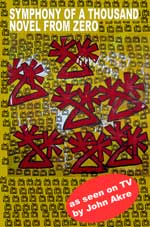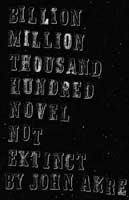
This novel is based on Gustave Mahler's Eighth Symphony, which is known as "Symphony of a Thousand," tho Mahler did not approve of that title. 1,000 is much more exciting than 8, and the promoter for the first performance of the concert came up with the alternative title because the symphony does demand a big orchestra and several choruses for a performance. You need around 200 people to perform it, and the promoter must have rounded that up to a thousand to get his name, but the name has stuck, and I like the way it sounds.
I had the title before I had the book. I took the book itself from the symphony. The book is based on this piece of music, and I listened to it again and again as I wrote it.
Mahler's Symphony of a Thousand has two movements. The first is a hymn of praise to the creator, and the second movement sets to music the final scene from Goethe's Faust. In this scene, Faust is more or less welcomed into heaven, or into eternity. Because of the symphony, I chose to root this novel in the story of Goethe's Faust.
I began writing it just as the first gulf war was drawing to a conclusion, and there were victory parades for our tremendous murderous achievement. I imagined big balloons of TV characters going down the streets in victory, and victory curses or hymns of glory sung by these gigantic balloons. I began by writing these victory parades, and that set the scene for the chaos to follow.
My Faust was the inventor of television. The actual inventor of electronic television was a rural Utah boy named Philo T. Farnsworth. My Faustus takes Farnsworths' first name. Today my Faustus works at a University, studying television viewership.
The book skips around between scenes in the life of Philo T. Faustus, his graduate assistant Wagner, President Mephisto of the Helmart Companies, and TV Producer Josie Gretchen. I wanted to give the book the effect of turning quickly from channel to channel, like you're not sure what to watch on the TV but as if all the channels are telling part of the same story, which they really always are.
When I wrote the book I was studying Visual Communication at the University of Minnesota and doing volunteer video production at the Minneapolis Television Network, the public access TV station in the town where I work. I had come from a filmmaking background. I say this not because I ever made any money making films, but I studied filmmaking in school and made 8mm movies when I was a teenager. The sanctity of watching images in a theatre was something that appealed to me more in my early adulthood than watching them in the commercially polluted environment of a TV screen. But now I was making television that nobody could watch, rather than movies that nobody ever saw. But because of public access, my videos were being shown, and they were now part of this commercially polluted environment all around the small island of public access channels on the TV dial.
The book was also my way of dealing with the detritus of years of childhood spent watching far too much television. By the time I wrote this book I hardly ever watched TV, and was much more disconnected from popular culture than I am today, ten years later and much more an old fogey. The TV characters in the book were the ones from my childhood, from that time when I lived to watched TV; it was the first thing I did in the morning and the last thing I did before going to bed. In between all the TV shows was school and recess.
My mind was horribly scarred by that experience, and this book let me get out some of my frustration about that lost childhood.


Contact: E-mail me